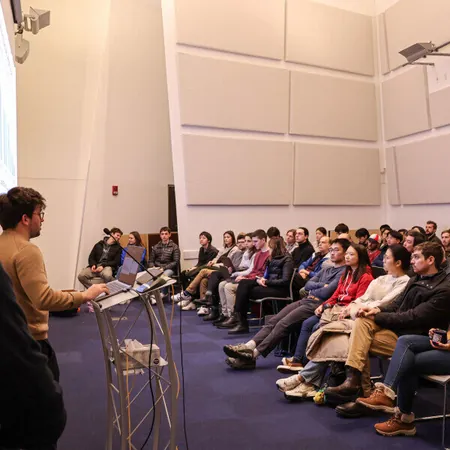
Revolutionary Open-Source AI Model Boltz-1 Set to Transform Biomedical Research!
2025-01-02
Author: John Tan
Introduction
In a groundbreaking advancement for the scientific community, a team of researchers from the Massachusetts Institute of Technology (MIT) has unveiled Boltz-1, a fully open-source artificial intelligence model designed to predict biomolecular structures, which could reshape the future of biomedical research and drug development.
Overview of Boltz-1
Boltz-1 rivals Google DeepMind’s AlphaFold3, a proprietary model that has been somewhat restricted to academic research. This new tool democratizes access to cutting-edge technology, promoting wider innovation and collaboration in the field. Boltz-1 stands out as the first open-source model to achieve performance levels comparable to AlphaFold3, which earned its developers a Nobel Prize in Chemistry for its groundbreaking work in understanding protein structures.
Development Team
The model was developed by an impressive team that includes graduate students Jeremy Wohlwend and Gabriele Corso, alongside Saro Passaro, an MIT Jameel Clinic Research Affiliate, and esteemed professors Regina Barzilay and Tommi Jaakkola from the Department of Electrical Engineering and Computer Science. They presented their impressive work at the Stata Center, emphasizing the importance of fostering global collaboration to accelerate scientific discoveries in the biomolecular domain.
Significance of Protein Structure Prediction
Accurate prediction of protein structures is vital for designing new drugs and engineering proteins with specific functions, yet has posed challenges for researchers for decades. Traditional methods of understanding protein structures are complex due to the intricate process by which amino acid chains fold into three-dimensional forms. Boltz-1, however, uses state-of-the-art machine learning techniques to make these predictions with remarkable accuracy, even matching results obtained through experimental methods.
Development Process
In developing Boltz-1, the MIT team began with a similar approach as AlphaFold3 but made novel improvements to enhance accuracy and efficiency. They not only released the model but also shared their entire training and fine-tuning pipeline, allowing other scientists to build upon their work.
Challenges Faced
Creating Boltz-1 required an immense effort over four months, with the researchers tackling substantial challenges, particularly the ambiguity found in the extensive Protein Data Bank—a compilation of biomolecular structures accumulated over the last 70 years. Wohlwend reflected on the arduous task, noting, “A lot of it is pure domain knowledge that one just has to acquire. There are no shortcuts.”
Promising Results and Future Plans
The results are indeed promising, with Boltz-1 achieving accuracy levels analogous to AlphaFold3 when predicting diverse and complex biomolecular structures. Looking ahead, the MIT team is committed to further enhancing Boltz-1’s performance while reducing prediction time, and they actively encourage researchers to experiment with Boltz-1 through their GitHub repository and join discussions in their dedicated Slack community.
Call for Collaboration
Wohlwend encapsulated their vision by stating, “We are very eager to collaborate with others and see what the community does with this tool,” suggesting that the journey of innovation has only just begun.
Funding and Support
This initiative has garnered financial support from various esteemed organizations, including the U.S. National Science Foundation, the Jameel Clinic, and collaborative cancer research projects with significant funding aimed at combating emerging health challenges.
Conclusion
With the release of Boltz-1, MIT is not just advancing technology but is also paving the way for a collaborative future in research, where breakthroughs can emerge from shared knowledge and open-source innovation. Get ready for a new era of scientific discovery!



 Brasil (PT)
Brasil (PT)
 Canada (EN)
Canada (EN)
 Chile (ES)
Chile (ES)
 Česko (CS)
Česko (CS)
 대한민국 (KO)
대한민국 (KO)
 España (ES)
España (ES)
 France (FR)
France (FR)
 Hong Kong (EN)
Hong Kong (EN)
 Italia (IT)
Italia (IT)
 日本 (JA)
日本 (JA)
 Magyarország (HU)
Magyarország (HU)
 Norge (NO)
Norge (NO)
 Polska (PL)
Polska (PL)
 Schweiz (DE)
Schweiz (DE)
 Singapore (EN)
Singapore (EN)
 Sverige (SV)
Sverige (SV)
 Suomi (FI)
Suomi (FI)
 Türkiye (TR)
Türkiye (TR)
 الإمارات العربية المتحدة (AR)
الإمارات العربية المتحدة (AR)